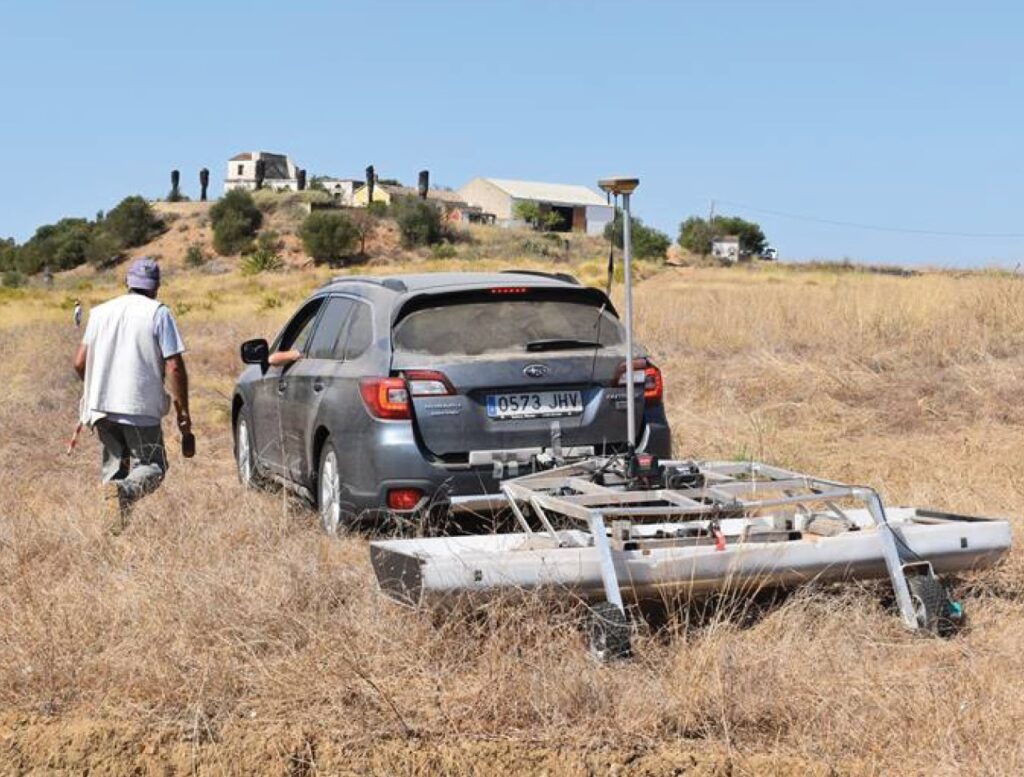The archaeological excavations in the former Quinta das Antas, near Luz de Tavira, carried out this year for the first time, confirmed the existence of Roman remains in these lands, announced the University of Algarve.
These archaeological works, which took place in July, confirmed the remains that Estácio da Veiga had already mentioned in the XNUMXth century, and which, more recently, had been identified by geophysical surveys.
This intervention is part of the archaeological research project of the Roman city of Balsa, which took place mainly at Quinta da Torre d'Aires and in adjacent lands, as part of the new campaign, bringing together teams from the universities of Algarve and Cádiz (Spain) and of the Municipality of Tavira.
The results of the new archaeological campaign in the remains of the ancient Roman city of Balsa (Luz de Tavira) will be presented in November, announced the University of Algarve.
After last year's work, this time “non-invasive prospecting with a georadar” was carried out, as well as “measurement of the magnetic sensitivity of soils with a Gradiometer in the archaeological areas of Quinta da Torre d'Aires and in adjacent lands”, explains UAlg.
The entire archaeological area of the farm «was investigated with these non-invasive methods, with the georadar being applied to other properties to the east where the ancient Roman city extended».
In parallel, archaeological excavations were carried out either in the area of the farm or, for the first time in the history of Balsa's investigations, in one of the properties on land of the former Quinta das Antas.
“Such works were only possible with the helpful collaboration of some owners who, in this way, support the knowledge of the past of this region”, stresses the team.
The non-invasive surveys were carried out in collaboration with a team from the Unidad de Geodetección of the University of Cádiz, led by professor Lázaro Lagóstena Barrios.
All these works were carried out within the scope of the ongoing project, funded by CRESC 2020, called "BALSA, Searching the Origins of Algarve» coordinated by the University of Algarve in partnership with the Centro de Ciência Viva de Tavira, the Municipality of Tavira and the Regional Directorate of Culture.
This project, which has another year of research, «has already determined a good part of the limits of the urban area, which appears much smaller than it has been published, which is more in keeping with the reality of most of this type of cities. of the southwest of the Peninsula», explains UAlg.
Research has also pointed to a particularly rich period up to the second half of the XNUMXnd century, when the city will have collapsed, perhaps due to a tsunami, being rebuilt at the end of that century or the beginning of the following, with a productive vocation closely linked to the exploitation of marine resources and the production of fish preparations.
The occupation of the site continued beyond Roman times, until, in the Islamic period, the present city of Tavira was born.
In the early years of this scientific investigation, archaeologists found some promising clues, which helped to understand a little better this mysterious Roman city, located inside the Quinta da Torre d'Aires.




















Comments